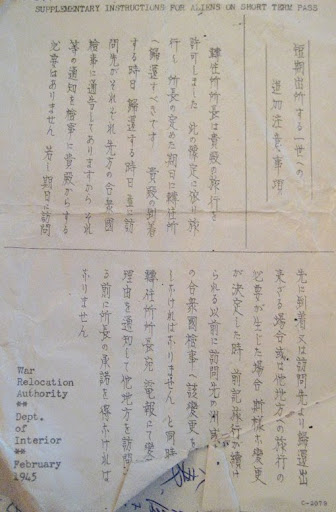Before James H. Hirokawa bought his home in Montgomery Township, Pa., the seller checked with all the neighbors if they were willing to live near a Japanese man. The year was 1945, and Hirokawa had just been released from an internment camp.
During World War II, the United States government sent about 120,000 Japanese Americans from their homes on the Pacific coast to War Relocation Camps. Severed from neighbors, friends, and the comforts of home, the evacuees endured barracks conditions. The aggregate financial loss of Japanese-American businesses and property during the course of the war is estimated at about four to five million dollars (adjusted for inflation).* Perhaps worse, the internees suffered emotionally and socially as a result of the government's institutionalized racism. In 1989, President George Bush issued a formal apology from the United States government for the trauma inflicted on the internees.
 James H. Hirokawa, born in Watsonville, California in 1913, was one of the Japanese Americans relocated during World War II. He was sent to Poston in southwestern Arizona, the largest of the ten internment camps. Afterwards, Hirokawa moved to Montgomery Township in Pennsylvania, where he bought a farm and grew vegetables for Campbell's Soup. He was a member of Providence Presbyterian Church in Quakertown and the Philadelphia Chapter of the Japanese American Citizen League until his death in 2004 at the ripe age of 90.
James H. Hirokawa, born in Watsonville, California in 1913, was one of the Japanese Americans relocated during World War II. He was sent to Poston in southwestern Arizona, the largest of the ten internment camps. Afterwards, Hirokawa moved to Montgomery Township in Pennsylvania, where he bought a farm and grew vegetables for Campbell's Soup. He was a member of Providence Presbyterian Church in Quakertown and the Philadelphia Chapter of the Japanese American Citizen League until his death in 2004 at the ripe age of 90.
The Montgomery Township Historical Society holds a small but fascinating collection of James H. Hirokawa's papers, documenting his internment at the Poston War Relocation Camp and his later life as a farmer in Pennsylvania. Regrettably, I must admit that I was not able to probe the depths of the collection because many of materials were in Japanese.  However, there was more than enough to pique my interest: an official document from the War Relocation Authority, a yearbook from a Poston high school organized by the internees, letters from Japan, and more. The collection provides rare glimpses into Hirokawa's experiences in a War Relocation Camp and later settling into a quiet life as a farmer in Montgomery County, Pennsylvania.
However, there was more than enough to pique my interest: an official document from the War Relocation Authority, a yearbook from a Poston high school organized by the internees, letters from Japan, and more. The collection provides rare glimpses into Hirokawa's experiences in a War Relocation Camp and later settling into a quiet life as a farmer in Montgomery County, Pennsylvania.
See all finding aids from the Montgomery Township Historical Society.
Bibliography
*Burton, Jeffery F., Mary M. Farrell, Florence B. Lord, and Richard W. Lord. "Sites of Shame: An Introduction" from Confinement and Ethnicity: An Overview of World War II Japanese American Relocation Sites. Western Archeological and Conservation Center, National Park Service. Publications in Anthropology 74 (1999, rev. July 2000). Accessed August 20, 2012. http://www.cr.nps.gov/history/online_books/anthropology74/ce1.htm

